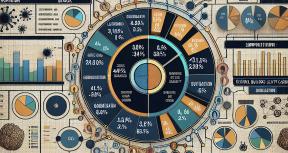Over the past years, IEG evaluated the Bank Group's responses to various crises: the 2008 global economic crisis and the food crisis response to name just two. In these evaluations we used a traditional approach of assessing what the Bank Group had done against what it set out to do: its own objectives and measures of success. Today, let’s take a look at IEG findings through a different lens: what does it take to crisis proof an institution, how does this compare to our lessons, and how do we turn challenge into opportunity?
Looking for Examples: There Is No Perfect Match. The humanitarian sector, which is the first responder to calamities, published in 2004 good practice for preparedness to emergency programming. In the private sector, Jim Collins’ Great By Choice is an empirical study of enterprises that have weathered and even excelled in times of crises. Neither of them are a perfect match for the diverse business of the World Bank Group. Typical comparators – the regional international finance institutions – have not established crisis-related benchmarks and good practice standards.
Preparing for the Worst – in Better Times! Maybe not surprisingly, the messages are that preparing for the worst is best done in times that are better. Even intuitively we would all agree that preparing for a crisis right in the midst of it would not be the best approach. For instance, our Evaluation of the World Bank Group’s Response to the Global Economic Crisis (Crisis 2 Evaluation) showed that developing social safety nets to support people most affected by calamities in times of need is best done in stable times and not after a crisis hit. Whether physicians in emergency rooms or humanitarians, first responders to disasters have a whole set of routines that kick in when a disaster breaks and stress levels get high.
Why Now – Isn’t the Change Process Hard Enough? On the contrary: the World Bank Group strategy and change process aim to strengthen the institutions in good and bad times, whether they are shock-induced like the 2008 global economic crisis, the food price crisis, or are more persistent challenges of addressing climate change or changes in the development and aid architecture. The change process involves specific steps that can make the Bank Group more resilient to testing times in the future. Specifically:
Systematic Country Diagnostics will lay the foundation for prioritizing selected interventions. Diagnostic tools and local expertise are essential to understanding whether, when, and where countries are hit by crisis, and determining appropriate solutions. IEG's recent evaluations have shown that the Bank Group’s analytical instruments have not picked up the right signals fast enough. Having the expertise that combines global and local knowledge, and choosing the right indicators will be essential to ensuring that country diagnostics pick up stress signals when needed. Collins speaks of “productive paranoia:” crisis-resilient companies were hyper-vigilant to potential threats.
Country Partnership Frameworks will specify the focus-areas for World Bank Group interventions, helping countries address the toughest challenges in achieving poverty eradication and shared prosperity. These frameworks have the potential to deal with crisis-induced challenges.
- Performance and Learning Reviews provide the ground for an adaptable program that is changed when circumstances demand. Using the right indicators in the diagnostic and monitoring high-frequency data should help ensure that the locus and impact of crisis, if/when it occurs, are detected and responded to appropriately. Not being prepared, and not understanding crisis-implications on the ground can result in choices that are costly – whether it is advising countries to inappropriately ease their fiscal prudence, to over-extending the Institutions’ own resources.
- Partnerships with others. Crisis responders, such as those in the humanitarian sector, know that the most successful responses – and painful failures – were due to role clarity and coordination among actors. The Crisis 2 Evaluation documented a number of examples of successful collaboration across institutions in times of crisis, something that would work even better on the basis of strong partnerships throughout.
So far, so good, but what is missing? Our crisis-related evaluations suggest two areas that should not be lost from sight: clarity about goals – in good times and in bad – and having a set of crisis response instruments ready for use when needed. When the global economic crisis broke, liquidity was seen as the solution and lending levels were the goal. They were achieved, largely, by falling back on existing loans that were scalable. As a result, the aggregate response of the World Bank was strong, but not necessarily directed to the countries and sectors in greatest need. The Bank’s crisis lending instrument did not get activated, while IFC’s efforts to develop new instruments in times of crisis were largely unsuccessful, except for the global trade finance initiative. Going forward, the World Bank Group will need to think of ways for the twin goals to stay squarely in sight in times of crises. At the same time, the review of the Bank Group’s financial position needs to ensure the institutions have instruments that are fit for crisis response without weakening their response capacity.
Note: Jim Collins has undertaken and published empirical research on companies, using data to question what has made some companies grow from “Good to Great” or, as used for this blog, to become “Great by Choice.”








Add new comment